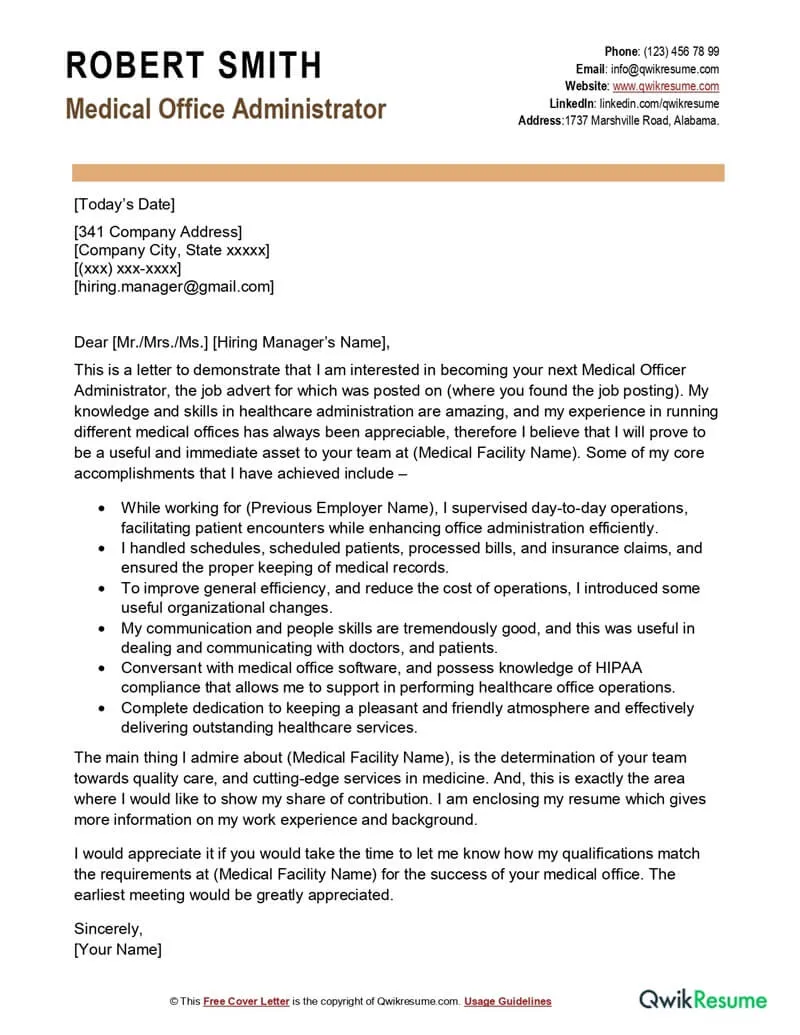Medical Office Admin Cover Letter Guide
Securing a medical office administration position often hinges on a well-crafted cover letter. This crucial document serves as your first impression, introducing you to potential employers and highlighting your qualifications. A compelling cover letter demonstrates your understanding of the role, showcases your skills, and persuades the hiring manager to review your resume. This comprehensive guide will walk you through the essential components of writing a medical office admin cover letter that stands out and increases your chances of landing an interview. From formatting tips to common mistakes to avoid, learn the must-know strategies for a winning application. Crafting a great cover letter is an art, but following these steps will give you a distinct advantage.
Understanding the Purpose of a Cover Letter
The primary function of a cover letter is to introduce you and your application to the hiring manager. Think of it as a personal sales pitch, providing a glimpse into your personality and professional demeanor. It offers an opportunity to elaborate on your resume, emphasizing the skills and experiences most relevant to the specific job you’re applying for. A well-written cover letter can make a significant difference, even if your resume is strong. It can highlight your interest in the company and the specific role. It’s a way to demonstrate your writing ability and attention to detail, vital qualities for any administrative role.
Why is a Cover Letter Important
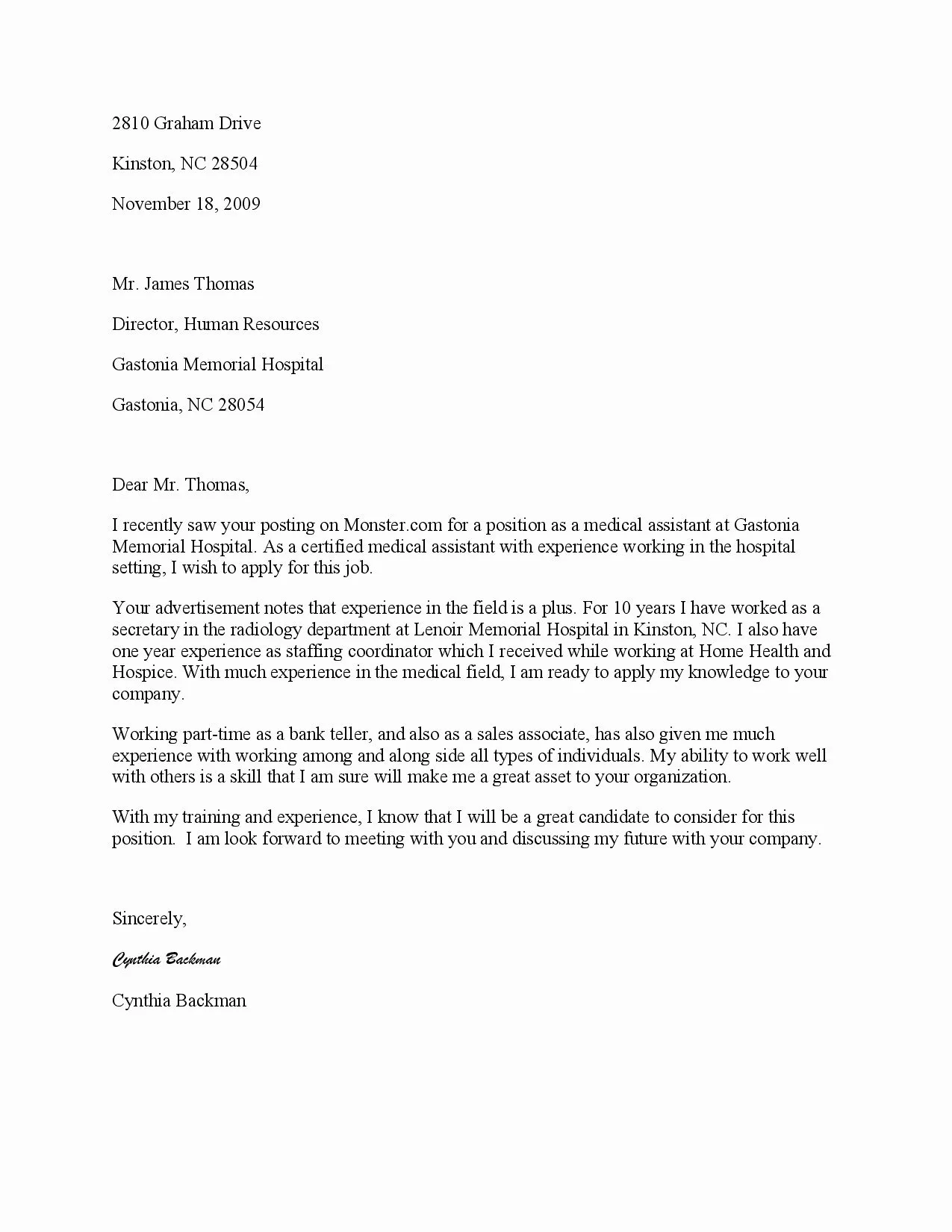
A cover letter allows you to personalize your application and tailor it to each job. It is an opportunity to express your enthusiasm for the position and explain why you’re a great fit. It allows you to address any gaps in your resume or explain unusual circumstances. Because medical offices often receive numerous applications, a cover letter helps you differentiate yourself from other candidates. By highlighting the skills and experiences most relevant to the job, you increase the likelihood that the hiring manager will read your resume and consider your application seriously. Furthermore, a cover letter demonstrates your communication skills, a critical asset in medical office administration.
Highlighting Your Skills and Experience
The cover letter is where you can showcase the skills and experiences that directly align with the job requirements. Focus on skills like patient scheduling, insurance verification, medical record management, and proficiency in medical software. Provide specific examples of how you have successfully used these skills in previous roles. Quantify your achievements whenever possible. For example, mention the number of patients you managed, the efficiency improvements you implemented, or the reduction in errors you achieved. Show, don’t just tell. For instance, instead of saying you are organized, describe a specific system or process you used to streamline office operations. Use keywords from the job description to demonstrate your understanding of the role and the employer’s needs. Show that you know what they’re looking for.
Key Components of a Medical Office Admin Cover Letter
A well-structured cover letter follows a standard format to ensure clarity and professionalism. It begins with your contact information, followed by the date and the recipient’s details. The body of the letter should be divided into well-defined paragraphs, each serving a specific purpose. A strong introduction grabs the reader’s attention, the body paragraphs showcase your qualifications, and the closing reiterates your interest and provides a call to action. Remember to proofread meticulously to avoid errors that could negatively impact your application. A clear, concise, and well-organized cover letter is essential for a positive first impression. The organization is as critical as the content.
Contact Information and Date
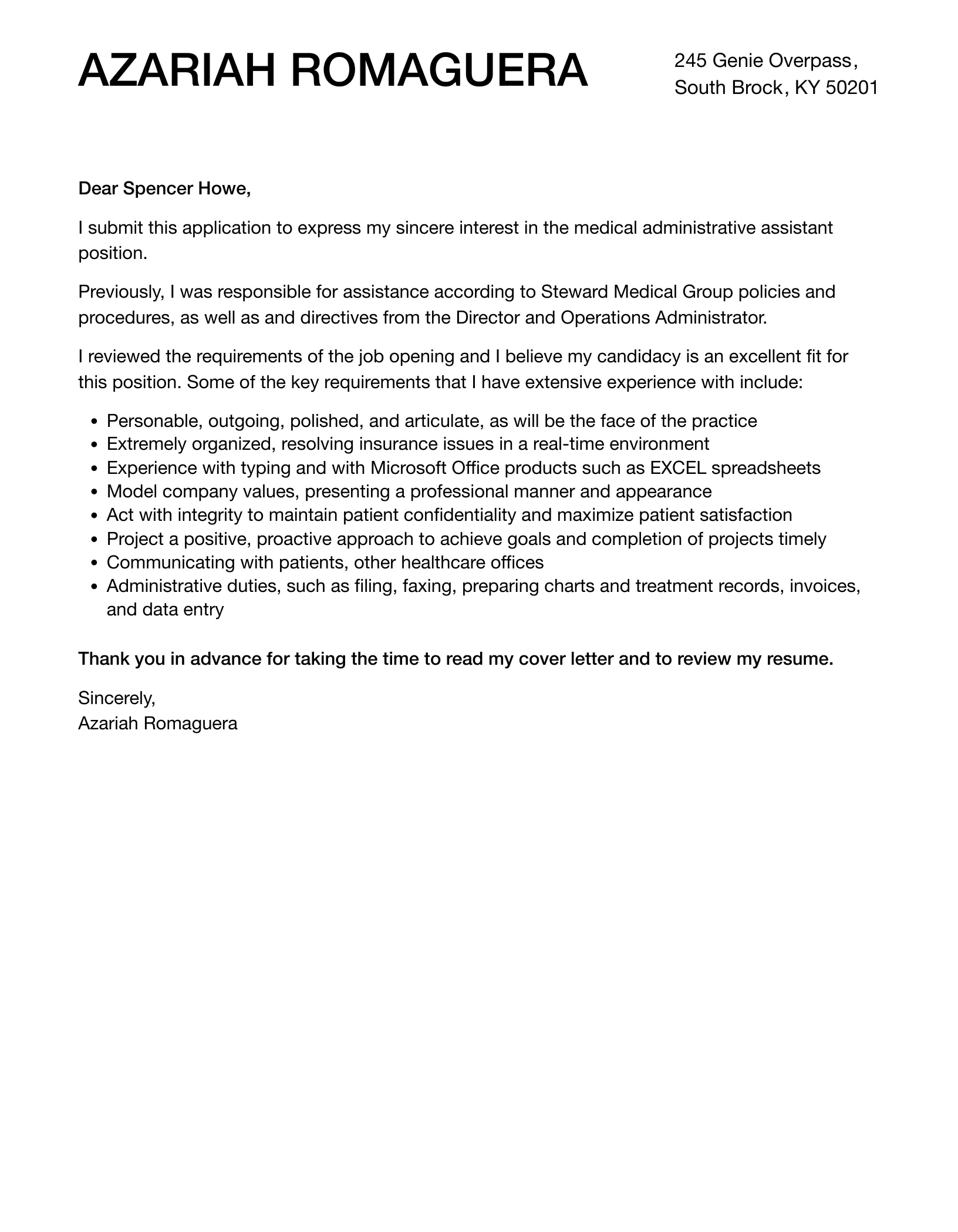
At the top of your cover letter, include your full name, address, phone number, and email address. This information allows the hiring manager to contact you easily. Following your contact details, include the date you are submitting the application. Next, include the hiring manager’s name, title, and the medical office’s name and address. Always address the letter to a specific person, if possible. Research the medical office’s website or LinkedIn to find the name of the hiring manager or the appropriate contact person. If you can’t find a name, use a professional salutation like ‘Dear Hiring Manager’. This demonstrates that you’ve taken the time to research the company and shows attention to detail.
Greeting the Hiring Manager
Start your cover letter with a professional greeting. ‘Dear Mr./Ms./Mx. [Last Name]’ is the preferred format when you know the hiring manager’s name. If you are unsure of the gender, use a gender-neutral salutation, such as ‘Dear [First Name] [Last Name]’. If you can’t find a specific name, use a general greeting such as ‘Dear Hiring Manager’. Avoid informal greetings like ‘Hello’ or ‘Hi’. The greeting sets the tone for the entire letter. Always ensure you use the correct spelling and title of the recipient. Proofread this section carefully, as errors here can create a negative first impression. Remember, accuracy and professionalism are key.
Body Paragraphs
The body of your cover letter is where you showcase your skills, experience, and enthusiasm. Divide this section into well-organized paragraphs to create a clear and compelling narrative. The first paragraph should state your intention to apply for the position and briefly mention where you found the job posting. The subsequent paragraphs should elaborate on your relevant skills and experiences. The closing paragraph should reiterate your interest, express your gratitude for their consideration, and include a call to action. Each paragraph should have a specific focus and contribute to the overall purpose of persuading the hiring manager to review your application. Use action verbs and quantifiable results to make your claims more persuasive.
First Paragraph
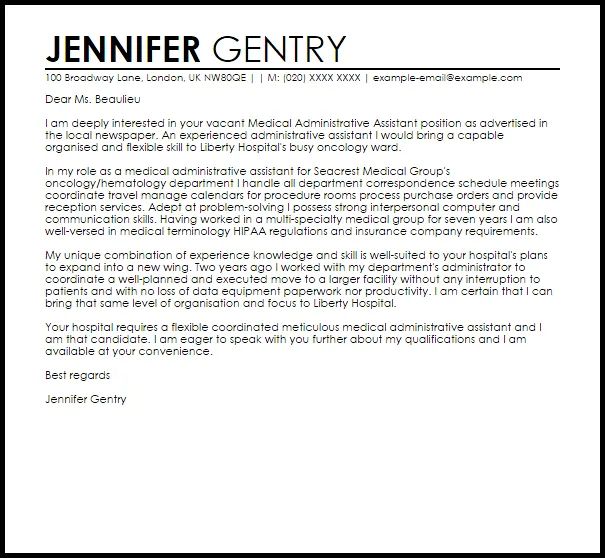
The first paragraph should clearly state the purpose of your letter: to apply for the medical office administration position. Mention the specific job title and where you saw the job posting (e.g., online job board, company website, referral). Briefly mention why you are interested in the position and the medical office. This helps the hiring manager understand your objective immediately. Keep this paragraph concise and focused. Use a strong opening sentence to capture the reader’s attention. A clear and direct opening sets the stage for the rest of your cover letter. For example, “I am writing to express my keen interest in the Medical Office Administrator position at [Medical Office Name], as advertised on [Platform].”
Second Paragraph
In the second paragraph, highlight your relevant skills and experience. Focus on the qualifications that align with the job requirements. Mention any certifications, software proficiency, or specific skills that are essential for the role. Back up your claims with specific examples from your previous experiences. Quantify your accomplishments whenever possible. If you increased patient satisfaction scores or improved operational efficiency, provide specific numbers. Demonstrate how your skills and experiences align with the responsibilities outlined in the job description. Emphasize any experience with electronic health records (EHR) systems, insurance verification, patient scheduling, or medical billing. Show the value you can bring to the medical office.
Third Paragraph
The third paragraph, or final body paragraph, should emphasize your enthusiasm for the position and the medical office. Explain why you are particularly interested in working for this specific medical office. Research the office’s mission, values, and recent achievements to demonstrate your genuine interest. Mention any unique qualities that align with their culture. Show that you are not just looking for a job but are genuinely excited about the opportunity to contribute. Briefly reiterate how your skills and experience make you a good fit. If you have a particular skill set that matches a need the office has, mention that. End with a strong statement about your commitment to excellence and patient care. This paragraph allows you to show your personality and passion.
Formatting and Layout Tips
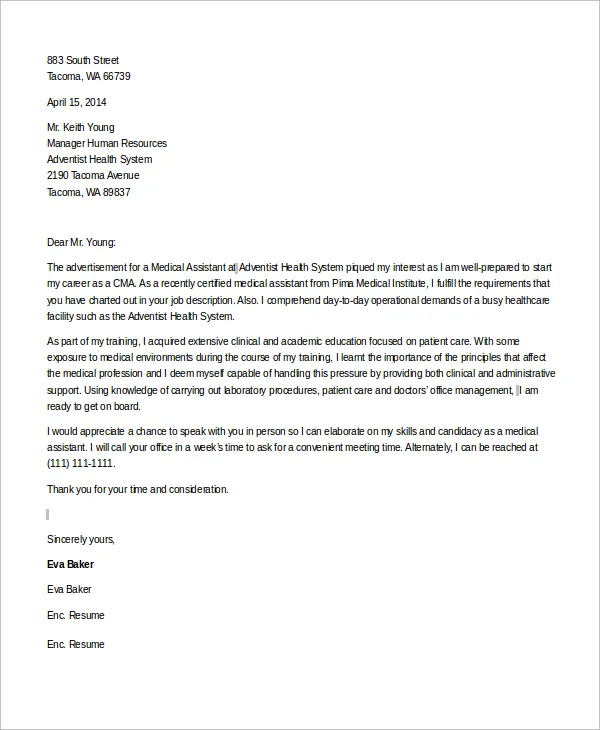
The format and layout of your cover letter should be professional and easy to read. This involves choosing an appropriate font, using proper margins and spacing, and ensuring a clean and uncluttered appearance. A well-formatted cover letter demonstrates your attention to detail and professionalism. The goal is to make it easy for the hiring manager to read and absorb the information quickly. A poorly formatted letter can be as detrimental as a poorly written one. A professional appearance shows respect for the recipient. Clean formatting also enhances readability, allowing your skills and experience to shine through. A cover letter header is the first thing the reader will see.
Font Selection and Readability
Choose a professional and easy-to-read font, such as Times New Roman, Arial, Calibri, or Helvetica. The font size should be between 10 and 12 points to ensure readability. Avoid using overly decorative or unusual fonts. Your goal is to create a clean and uncluttered document. Ensure the text is legible on all devices. Test the font on different devices to make sure it appears correctly. Standard fonts are designed for easy reading, and they won’t distract the reader from your message. Use bolding and italics sparingly, and only to emphasize key points. The focus should be on the content, not the font style. A readable font helps make the hiring manager’s job easier and more pleasant.
Margins and Spacing
Use standard margins of 1 inch on all sides of your cover letter. This provides enough white space to make the letter appear less crowded and easier to read. Double-space between paragraphs and single-space within paragraphs for clarity. Consistent spacing creates a clean and professional look. Adjusting the spacing can significantly impact how the letter appears. Proper spacing improves the visual appeal and readability. This shows that you are thoughtful in your presentation. Use clear and consistent spacing to separate different sections, making the letter easy to navigate. The spacing helps the reader quickly locate important information. A well-spaced letter suggests organization and attention to detail.
Proofreading and Editing
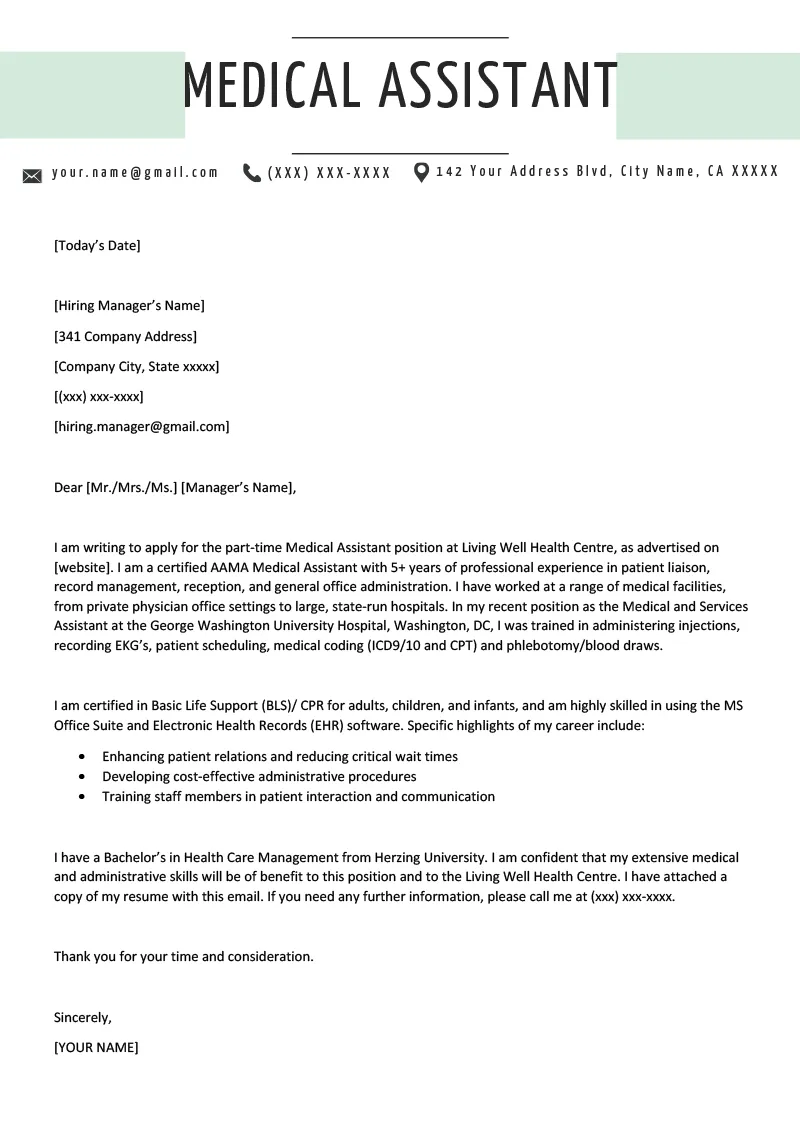
Proofreading and editing are crucial steps in the cover letter writing process. Carefully review your cover letter for any grammatical errors, typos, or inconsistencies. Mistakes can undermine your credibility and make a negative impression on the hiring manager. Take the time to read through the letter multiple times and use a spell checker and grammar checker. Ensure the tone is professional and appropriate for the medical field. Consider having a friend, family member, or career counselor review your cover letter for feedback. A fresh pair of eyes can catch errors that you might have missed. Proper proofreading and editing are critical steps to help make your cover letter shine.
Common Mistakes to Avoid
Certain mistakes can significantly reduce your chances of landing an interview. Being aware of these common pitfalls can help you avoid them and improve your application. Some of the most critical mistakes include using a generic cover letter, making typos and grammatical errors, and lacking specificity in your descriptions. These errors can send the wrong message to the hiring manager. A well-crafted cover letter is tailored to the specific job and demonstrates your attention to detail. Avoiding common mistakes will significantly increase your chances of making a great first impression.
Generic Cover Letters
Avoid using a generic cover letter that you send to every job. Generic letters lack personalization and fail to showcase your interest in the specific position or medical office. Each cover letter should be tailored to the particular job requirements and the values of the organization. Customize the letter by addressing the hiring manager by name and highlighting how your skills and experience match the job description. Research the medical office and mention something specific about their mission, values, or recent accomplishments. Take the time to show you’re genuinely interested in the position. Demonstrate that you understand the role and the needs of the organization. Employers can quickly recognize when a cover letter is generic.
Typos and Grammatical Errors
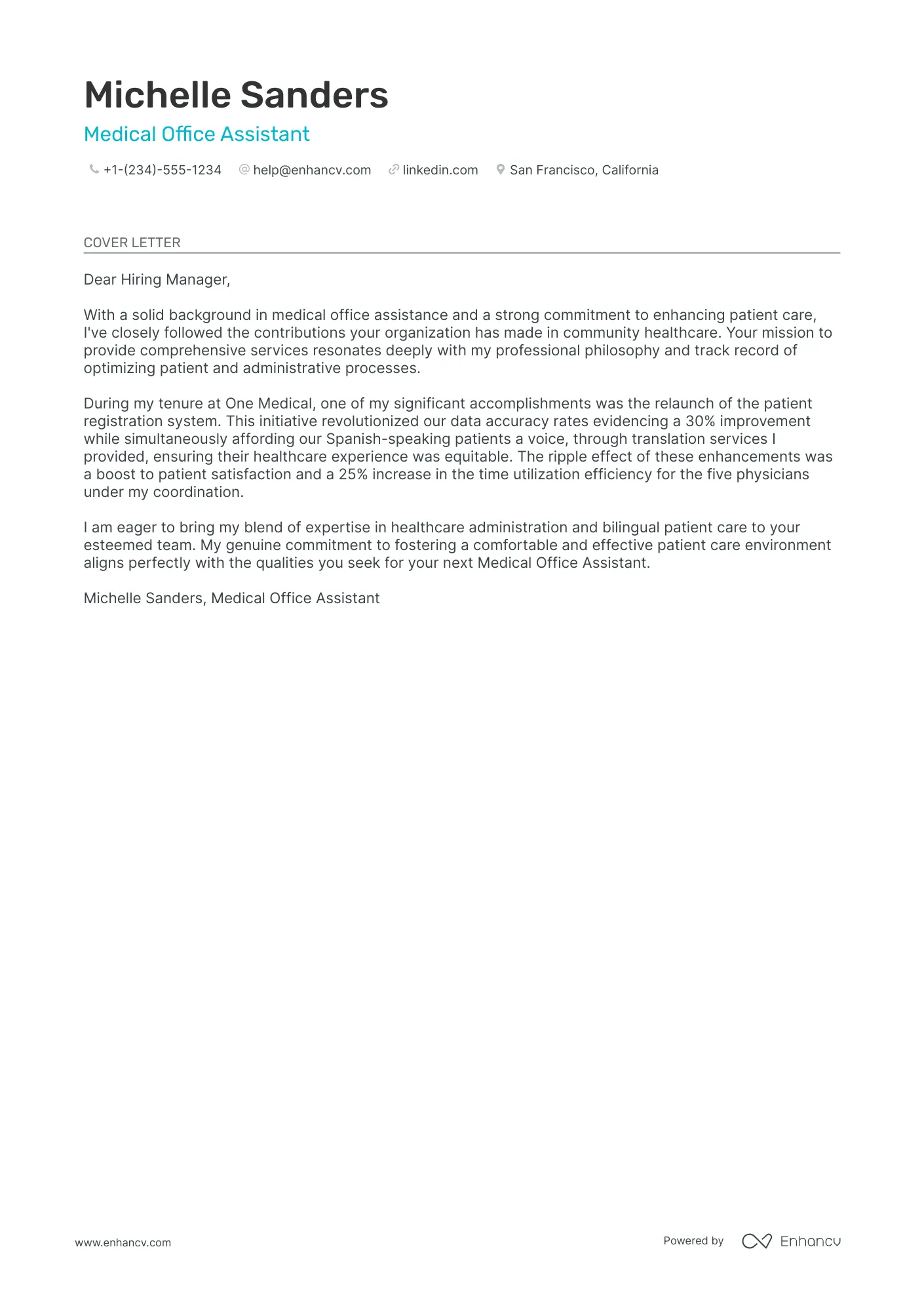
Typos and grammatical errors can immediately undermine your credibility. These errors suggest a lack of attention to detail and professionalism. Thoroughly proofread your cover letter before submitting it. Use a spell checker and grammar checker, but don’t rely on them entirely. Read the letter multiple times, and read it aloud to catch errors. Ask a friend, family member, or career counselor to review your letter. Ensure that all names, titles, and dates are correct. Pay attention to sentence structure, punctuation, and word choice. Avoid using informal language or slang. A clean and error-free cover letter shows respect for the hiring manager and the organization.
Lack of Specificity
Avoid making general statements about your skills and experience. Provide specific examples to demonstrate your accomplishments and abilities. Instead of saying, “I am organized,” describe a specific system or process you used to streamline office operations. Quantify your achievements whenever possible. Instead of “I managed patient appointments,” say “I managed appointments for 50+ patients daily, reducing wait times by 15%.” Tailor your cover letter to the job description, and use keywords from the job posting. Mention specific software or systems you are proficient in. Providing specific details and quantifiable results helps the hiring manager understand the value you can bring to the role. Concrete examples make your qualifications more compelling.
Tailoring Your Cover Letter
To maximize your chances of success, you must tailor your cover letter to each job you apply for. This involves researching the medical office, matching your skills to the job requirements, and using relevant keywords. A tailored cover letter shows that you’ve taken the time and effort to understand the position and the needs of the employer. This demonstrates genuine interest and professionalism. Tailoring your cover letter is a critical step in the application process. It helps you stand out from other applicants and increases your chances of getting an interview.
Researching the Medical Office
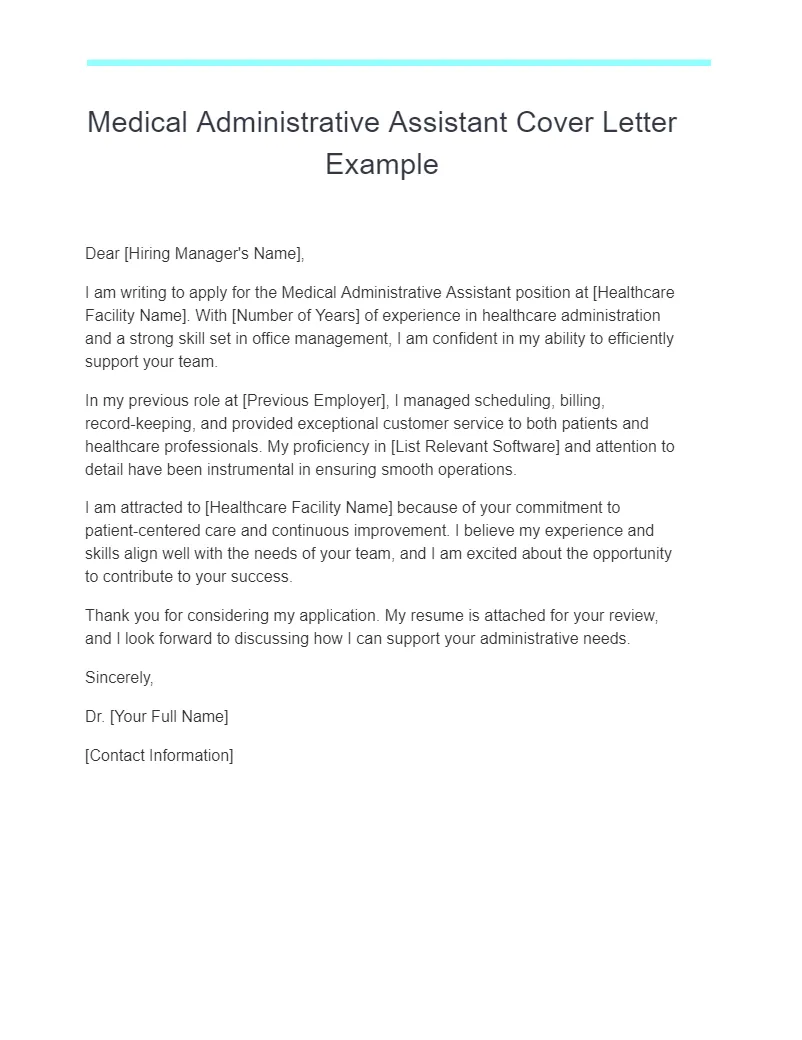
Before writing your cover letter, research the medical office. Visit the office’s website to learn about its mission, values, and services. Check out their social media profiles and read any recent news or press releases. Understand the medical office’s culture and patient care philosophy. Tailor your letter to align with their values. If the medical office emphasizes patient-centered care, highlight your experience with patient interaction and your commitment to providing a positive patient experience. Mentioning specific details about the medical office in your cover letter will show you’re genuinely interested. This level of preparation demonstrates your commitment and attention to detail. Doing your research demonstrates you want to work with them specifically.
Matching Skills to Job Requirements
Carefully review the job description and identify the key skills and qualifications the employer is seeking. Match your skills and experiences to those requirements. Use the job description as a guide to highlight the most relevant skills and experiences in your cover letter. Provide specific examples of how you have successfully used these skills in previous roles. For example, if the job description requires experience with medical billing, provide details about the billing systems you have used and any achievements you’ve had in that area. The goal is to demonstrate that you meet the specific needs of the position. When you clearly demonstrate that your skills align with the job requirements, you significantly improve your chances of getting an interview.
Using Keywords Effectively
Incorporate keywords from the job description into your cover letter. Recruiters and hiring managers often use applicant tracking systems (ATS) to scan resumes and cover letters for specific keywords. Including the right keywords will help your application get noticed. However, do not simply stuff your cover letter with keywords. Integrate them naturally into your sentences. Highlight the skills and experiences that the job description emphasizes. If the job description mentions ‘patient scheduling,’ use that phrase throughout your cover letter. If you are proficient in an EHR system, like EPIC, make sure to include that in your cover letter. The goal is to use keywords in a way that makes sense and accurately reflects your qualifications. Using keywords will improve your chances of getting your cover letter read.
Call to Action and Closing
The final section of your cover letter is where you express your enthusiasm, provide your contact information, and include a call to action. This is your final opportunity to make a strong impression and encourage the hiring manager to contact you. A well-crafted closing shows professionalism and leaves a lasting impression. The call to action is your chance to nudge the hiring manager to take the next step in the process. A good closing can make a positive and lasting impact.
Expressing Enthusiasm and Interest
In your closing paragraph, reiterate your enthusiasm for the position and the medical office. Reiterate your interest in contributing to the organization’s success. Restate how your skills and experience align with the job requirements. If possible, briefly mention something specific that excites you about the opportunity. Show genuine excitement about the prospect of working for the medical office. If you have followed their work, mention that. Show the hiring manager that you are truly interested in the position. This shows that you are passionate about the job. The enthusiasm will often be the deciding factor for the hiring manager.
Providing Contact Information Again
Provide your contact information again in the closing paragraph. Include your phone number and email address, making it easy for the hiring manager to reach you. Ensure the information is accurate and up-to-date. It is always good to make it easy for the hiring manager to contact you. Double-check your contact information to prevent errors. Providing your contact information again serves as a friendly reminder. This also ensures that the hiring manager has easy access to the information they need to contact you. Include your phone number and email address so that it is easy for the hiring manager to reach you.
Proper Closing and Signature
Close your cover letter with a professional closing, such as “Sincerely,” “Best regards,” or “Thank you for your time and consideration.” Then, sign your name. If you are sending the cover letter electronically, type your full name after the closing. If you are printing the letter and sending it by mail, sign your name above your typed name. A professional closing and signature create a polished and complete look. Make sure that your signature matches the name in your application. The closing and signature are the final elements of your cover letter, and they should reflect your professionalism and attention to detail. Ensure that it is correct and properly aligned with your contact information. The closing shows respect for the reader.
